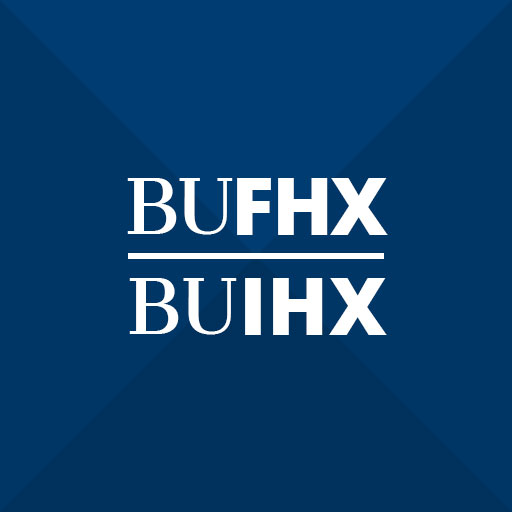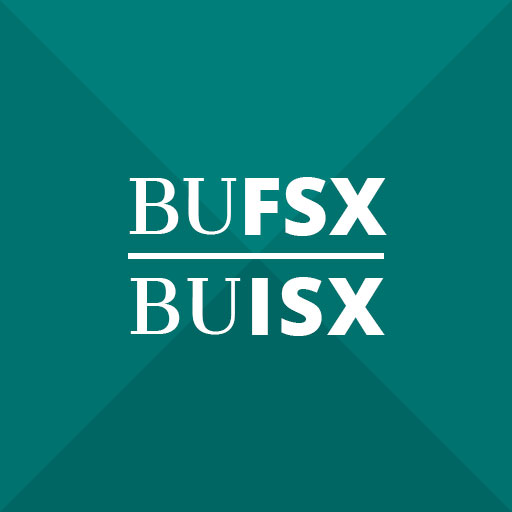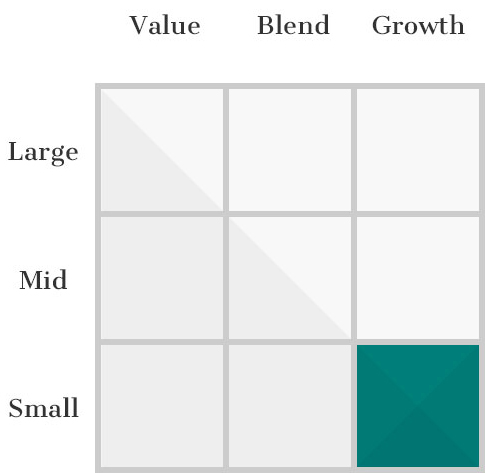Kiplinger recognized the Buffalo Flexible Income and International Funds as “Top-Performing Mutual Funds” in their recent fund analysis.

High Yield Fund
High Yield Fund
Quick Facts
| Investor | Institutional | |
| Ticker: | BUFHX | BUIHX |
| Daily Pricing: | ||
| As of 4/24/2024 | ||
| NAV: | $10.59 | $10.58 |
| $ Change: | $0.00 | $0.00 |
| % Change: |
0.00% | 0.00% |
| YTD: |
2.58% | 2.63% |
| Inception Date: | 5/19/1995 | 7/1/2019 |
| Expense Ratio: | 1.03% | 0.87% |
| Total Net Assets: | $447.54 Million (3/31/24) | |
| Morningstar Category: | High Yield Bond | |
| Benchmark Index: | ICE BofA U.S. High Yield | |
| Dividend Distribution: | Monthly | |
|
Related Material: Fund Fact Sheet Q1 2024 PM Commentary Q4 2023 Portfolio Manager Q&A |
||
Fund Objective & Investment Process
The investment objective of the Buffalo High Yield Fund is primarily current income, with long-term growth of capital as a secondary objective. The High Yield Fund normally invests at least 80% of its net assets in higher-yielding, higher-risk debt securities rated below investment grade by the major rating agencies (or in similar unrated securities), commonly known as “junk bonds”. Debt securities can include fixed and floating rate bonds as well as bank debt and convertible debt securities.
While the Fund maintains flexibility to invest in bonds of varying maturities, the Fund generally holds bonds with intermediate-term maturities. With respect to the remaining 20% of the Fund’s net assets, the Fund may invest in investment grade debt securities, U.S. Treasury Securities (typically with maturities of 60 days or less), money market funds, and equity investments, including dividend paying stocks and convertible preferred stocks.
▼
Our team brings many years of credit research experience to the bond market. We are proud to have provided our shareholders with what we believe is a conservative approach to investing in high yield bonds since 1995.
Jeff Sitzmann, Portfolio Manager
Morningstar Rating





Overall Morningstar Rating™ of BUFHX based on risk-adjusted returns among 606 High Yield Bond funds as of 3/31/24.
Performance (%)
| As of 3/31/24 | 3 MO | YTD | 1 YR | 3 YR | 5 YR | 10 YR | 15 YR | 20 YR | Since Inception |
|---|---|---|---|---|---|---|---|---|---|
| BUFFALO HIGH YIELD FUND - Investor | 2.72 | 2.72 | 12.07 | 3.98 | 5.92 | 4.76 | 7.75 | 5.74 | 6.75 |
| BUFFALO HIGH YIELD FUND - Institutional | 2.76 | 2.76 | 12.24 | 4.13 | 6.06 | 4.90 | 7.91 | 5.89 | 6.91 |
| ICE BofA U.S. High Yield Index | 1.52 | 1.52 | 11.12 | 2.25 | 4.06 | 4.38 | 8.79 | 6.44 | 6.63 |
| Lipper High Yield Bond Funds Index | 1.82 | 1.82 | 10.69 | 2.30 | 3.99 | 3.93 | 8.08 | 5.59 | 5.56 |
| As of 3/31/24 | 3 MO | YTD | 1 YR | 3 YR | 5 YR | 10 YR | 15 YR | 20 YR | Since Inception |
|---|---|---|---|---|---|---|---|---|---|
| BUFFALO HIGH YIELD FUND - Investor | 2.72 | 2.72 | 12.07 | 3.98 | 5.92 | 4.76 | 7.75 | 5.74 | 6.75 |
| BUFFALO HIGH YIELD FUND - Institutional | 2.76 | 2.76 | 12.24 | 4.13 | 6.06 | 4.90 | 7.91 | 5.89 | 6.91 |
| ICE BofA U.S. High Yield Index | 1.52 | 1.52 | 11.12 | 2.25 | 4.06 | 4.38 | 8.79 | 6.44 | 6.63 |
| Lipper High Yield Bond Funds Index | 1.82 | 1.82 | 10.69 | 2.30 | 3.99 | 3.93 | 8.08 | 5.59 | 5.56 |
| 2013 | 2014 | 2015 | 2016 | 2017 | 2018 | 2019 | 2020 | 2021 | 2022 | |
|---|---|---|---|---|---|---|---|---|---|---|
| BUFFALO HIGH YIELD FUND - Investor | 9.40 | 1.96 | 1.80 | 6.65 | 5.98 | -2.26 | 12.32 | 9.27 | 5.53 | -5.53 |
| BUFFALO HIGH YIELD FUND - Institutional | 9.56 | 2.11 | 1.95 | 6.81 | 6.14 | -2.12 | 12.40 | 9.43 | 5.69 | -5.39 |
| ICE BofAML U.S. High Yield Index | 7.42 | 2.50 | -4.64 | 17.49 | 7.48 | -2.26 | 14.41 | 6.17 | 5.36 | -11.17 |
3 Year Risk Metrics
| BUFHX vs ICE BofA U.S. High Yield Index (As of 3/31/24) | |
|---|---|
| Upside Capture | 67.86 |
| Downside Capture | 50.49 |
| Alpha | 2.54 |
| Beta | 0.61 |
| Sharpe Ratio | 0.24 |
Hypothetical Growth of $10,000
Distributions
Record 5/17/2024 Payable 5/20/2024
Record 6/17/2024 Payable 6/18/2024
Record 7/17/2024 Payable 7/18/2024
Record 8/19/2024 Payable 8/20/2024
Record 9/17/2024 Payable 9/18/2024
Record 10/17/2024 Payable 10/18/2024
Record 11/18/2024 Payable 11/19/2024
Record 12/4/2024 Payable 12/5/2024 Cap Gains (if any)
Record 12/17/2024 Payable 12/18/2024
| Record Date | Payable Date | Distribution NAV | Net Investment Income | Short-Term Capital Gains | Long-Term Capital Gains | Distribution Total |
|---|---|---|---|---|---|---|
| 4/17/2024 | 4/18/2024 | $10.54 (Inv) $10.53 (Inst) | 0.03574674 0.03705502 | - - | - - | 0.03574674 0.03705502 |
| 3/18/2024 | 3/19/2024 | $10.57 (Inv) $10.56 (Inst) | 0.05863558 0.05979454 | - - | - - | 0.05863558 0.05979454 |
| 2/20/2024 | 2/21/2024 | $10.53 (Inv) $10.52 (Inst) | 0.07077710 0.07208359 | - - | - - | 0.07077710 0.07208359 |
| 1/17/2024 | 1/18/2024 | $10.52 (Inv) $10.51 (Inst) | 0.05439384 0.05564364 | - - | - - | 0.05439384 0.05564364 |
Portfolio
Portfolio Characteristics
| (As of 3/31/24) | |
|---|---|
| # of Holdings | 142 |
| 3-Yr Annualized Turnover Ratio | 32.55% |
| Average Duration | 2.49 years |
| Average Maturity | 4.27 years |
| 30-day SEC Yield | 6.97% |
Top 10 Holdings
| Name of Holding | Maturity Date | % of Net Assets |
|---|---|---|
| Uniti Group Lp 10.5% | 15-Feb-2028 | 2.85 |
| Northern Oil And Gas, Inc. 8.125% | 01-Mar-2028 | 2.35 |
| Geo Group Inc Term Loan | 23-Mar-2027 | 2.29 |
| Directv Financing Llc Term Loan | 02-Aug-2027 | 2.25 |
| Consensus Cloud Solutions, Inc. 6.0% | 15-Oct-2026 | 1.82 |
| KDC/One Development Corporation, Inc. Term Loan | 03-Aug-2028 | 1.77 |
| Amenal Pharmaceuticals Term Loan | 5/4/2028 | 1.76 |
| Energy Transfer, L.p. 7.125% Perp | Perpetual | 1.73 |
| Genesis Enery 8.875% | 4/15/2030 | 1.71 |
| Vista Outdoor 4.500% | 3/15/2029 | 1.69 |
| TOP 10 HOLDINGS TOTAL | 20.02% |
Asset Allocation
Percentages of Total Assets as of 3/31/24. Allocation percentages may not equal 100% due to rounding.
Sector Weighting
As of 3/31/24. Security weightings are subject to change and are not recommendations to buy or sell any securities. Sector Allocation may not equal 100% due to rounding.
Duration
| Duration Breakout (%)* | |
|---|---|
| 10+ Years | 0.00 |
| 7-10 Years | 0.00 |
| 5-7 Years | 0.82 |
| 3-5 Years | 26.70 |
| 1-3 Years | 31.73 |
| 0-1 Years | 12.44 |
Credit Quality
| Quality Breakout (%) | |
|---|---|
| Baa | 1.40 |
| Ba | 23.89 |
| B | 64.91 |
| Caa | 7.42 |
| Unassigned | 2.38 |
All ratings are as of 3/31/24. Moody’s is the rating source for the Quality Breakout Table. A credit rating is an assessment provided by a nationally recognized statistical rating organization (NRSRO), such as Moody’s or Standard & Poor’s. The firm evaluates the of credit worthiness of an issuer with respect to debt obligations, including specific securities, money market instruments, or other bonds. Ratings are measured on a scale that generally ranges from Aaa (highest grade) to C (lowest grade); ratings are subject to change without notice. Unassigned rating indicates that the debtor was not rated by an NRSRO and should not be interpreted as indicating low quality.
Management
Commentary
PERFORMANCE COMMENTARY
(As of 12/31/23) —
The Buffalo High Yield Fund produced a total return of 4.78% for the quarter, a result
that trailed the ICE BofA US High Yield Index return of 7.08%.
The U.S. high yield asset class posted its fifth consecutive quarter of positive returns
as economic data signaled resiliency and the Federal Reserve softened its hawkish
rhetoric prompting speculation that interest rate cuts may come sooner than
previously expected. The high yield index posted a loss of 1.24% in October before
surging 8.24% in November and December as 10-year Treasury Yields sank. The
significant downward pressure on treasury yields in the last two months of the year
pushed the yield to worst for high yield down to 7.82% by the end of the quarter,
marking a low point for 2023. For reference, the record low yield to worst of 4.22%
occurred in July 2021. Leveraged loans ended the quarter with a yield of 8.60%, which
was 140 basis points (bps) tighter than the previous quarter driven by moderating
inflation and resilient growth.
According to JP Morgan, high yield funds saw quarterly cash inflows of $5.3 billion
compared to roughly $3.5 billion of outflows during the preceding quarter. For
calendar year 2023, high yield fund outflows totaled -$7.9 billion compared to -$14.5
billion in 2022.
There were 65 high yield bonds issued during the quarter totaling $42.1 billion, slightly
higher than the $39.2 billion in new issues for the third quarter. The energy sector
accounted for nearly 25% of total new issuance, followed by financials and industrials
which each accounted for about 10% of the volume.
BB and CCC rated bonds outperformed single-B rated issues during the quarter (CCC
= 7.03%, B = 6.86%, BB = 7.15%) as investors focused on higher duration (BB issues)
and higher risk/reward (CCC issues) in anticipation of more aggressive interest rate
cuts. According to data from JP Morgan, the Retail, Housing, and Broadcasting sectors
were the best performers with returns of 9.36%, 8.65% and 8.55%, respectively. Retail
and Housing were the two worst performing sectors in the prior quarter, but investors
expect both to perform well in a declining rate environment. There were no negative
performing sectors during the quarter, but Metals/Minerals and Transportation were
the worst performing sectors delivering returns of 4.06% and 4.16%, respectively.
The U.S. high yield market’s spread to worst for the period was 377bps, 43bps
tighter than the preceding quarter, according to data from JP Morgan, and 185bps
tighter than its 20-year historical average of 562bps. The yield to worst for the high
yield market at quarter end was 7.82%, matching the 20-year average of 7.82%, and
significantly below the yield of 8.97% from the third quarter. Leveraged loan yields
tightened as well from 541bps in the prior period to 500bps.
Top Contributors
The top three contributors to performance for the quarter were Vista Outdoor 4.5%
corporate bonds, Uniti 10.5% corporate bonds, and Energy Transfer 7.125% corporate
bonds. Vista Outdoor bonds benefited from the announcement that Vista would be
acquired by Czechoslovak Group and the bonds will be repaid once the acquisition
is finalized. The 10.5% coupon and annuity-like cash flows attracted investors to the
Uniti bonds during the quarter and are now trading over par. The Energy Transfer
bonds rallied nearly 10 points during the quarter as investors were drawn to its near
investment grade quality and longer duration characteristics which should benefit the
bonds in a declining interest rate environment.
Top Detractors
The Array Technologies 1% convertible bonds, the iHeart Communication 8.375%
corporate bonds and the Mastec 6.625% corporate bonds were the worst performers
during the quarter. Array convertible bonds were negatively impacted by the 24%
decline in the underlying common stock price driven by unexpected project delays.
iHeart bonds declined after giving disappointing guidance and general concern over
the health of the radio industry as competitor Audacy filed for bankruptcy. The Mastec
bonds suffered from project delays, similar to Array’s, compounded by some illiquidity
volatility given there is only $78 million outstanding of the issue.
OUTLOOK
(As of 12/31/23) —
We are focused first and foremost on the Federal Reserve’s balancing act between
taming inflation while avoiding a recession, lingering supply chain disruptions, and the
geopolitical uncertainty caused by the conflicts in Ukraine and the Middle East. We are
managing the fund cautiously yet actively, focusing on higher-quality, non-investment
grade issuers with defensive business models and manageable credit metrics. We
will continue to deploy cash in opportunities that we believe offer the most appealing
risk/reward tradeoff with a bias toward shorter durations and less levered credits
relative to industry average. Additionally, we believe bank loans offer a more defensive
position as they provide senior positioning in the capital structure and less interest
rate sensitivity due to their floating rate structures. Finally, we continue to look for
opportunities in convertible bonds and preferred stocks. We ended the quarter with
135 positions, up slightly from the previous quarter’s level of 132 (excluding cash).
Literature
| Buffalo High Yield Fund Documents | Last Updated |
|---|---|
| Fact Sheet | 3/31/24 |
| Quarterly Commentary | 12/31/23 |
| Full Fund Holdings | 6/30/23 |
| Prospectus | 7/28/23 |
| Statement of Additional Information | 7/28/23 |
| Annual Report | 3/31/23 |
| Semi-Annual Report | 9/30/22 |
| Tax Guide - 2023 | 1/8/24 |
Fundamental Approach
We get to know the companies we invest in and learn how they run their business.
Top-Down & Bottom-Up
We identify Top-Down broad, secular growth trends and search for companies from the Bottom-Up.
Proprietary Philosophy
We construct our portfolios based on our own proprietary investment strategy.
Disciplined Investing
Sticking to our disciplined investment strategy ensures we maintain a consistent, balanced approach.
The Morningstar Rating™ for funds, or "star rating", is calculated for managed products (including mutual funds, variable annuity and variable life subaccounts, exchange-traded funds, closed-end funds, and separate accounts) with at least a three-year history. Exchange-traded funds and open-ended mutual funds are considered a single population for comparative purposes. It is calculated based on a Morningstar Risk-Adjusted Return measure that accounts for variation in a managed product's monthly excess performance, placing more emphasis on downward variations and rewarding consistent performance. The top 10% of products in each product category receive 5 stars, the next 22.5% receive 4 stars, the next 35% receive 3 stars, the next 22.5% receive 2 stars, and the bottom 10% receive 1 star. The Overall Morningstar Rating™ for a managed product is derived from a weighted average of the performance figures associated with its three-, five-, and 10-year (if applicable) Morningstar Rating™ metrics. The weights are: 100% three-year rating for 36-59 months of total returns, 60% five-year rating/40% three-year rating for 60-119 months of total returns, and 50% 10-year rating/30% five-year rating/20% three-year rating for 120 or more months of total returns. While the 10-year overall star rating formula seems to give the most weight to the 10-year period, the most recent three-year period actually has the greatest impact because it is included in all three rating periods.
The Buffalo High Yield Fund (BUFHX) received 5 stars among 606 for the 3-year, 5 stars among 575 for the 5-year, and 5 stars among 432 High Yield Bond funds for the 10-year period ending 3/31/24.



















